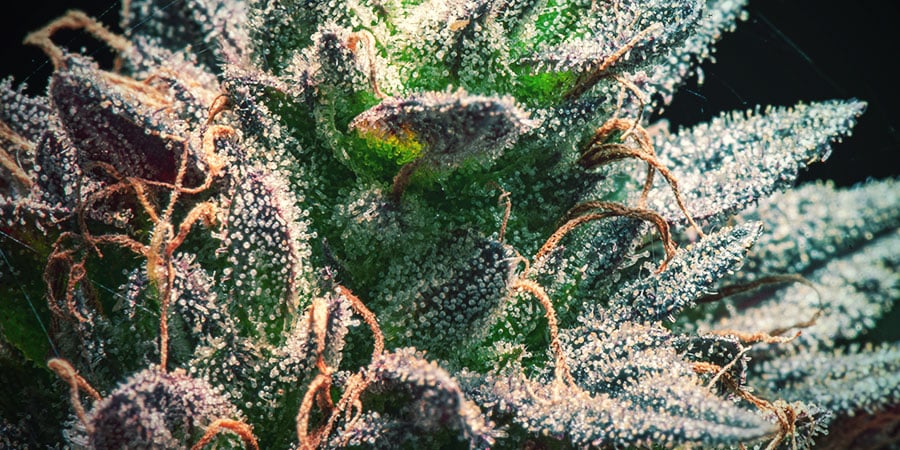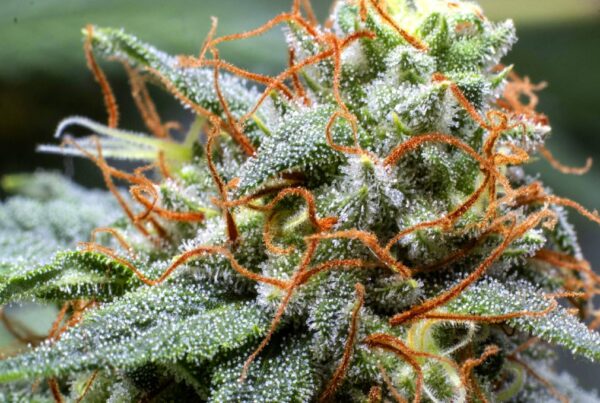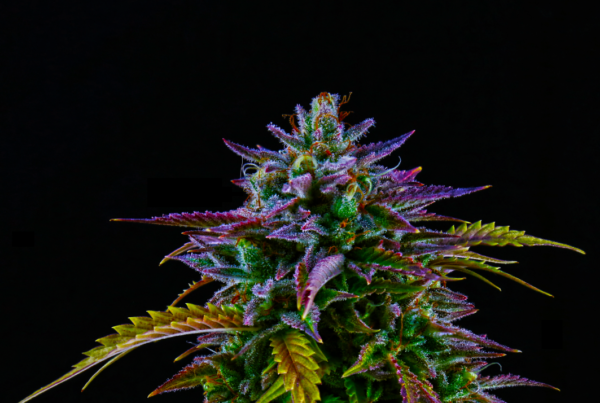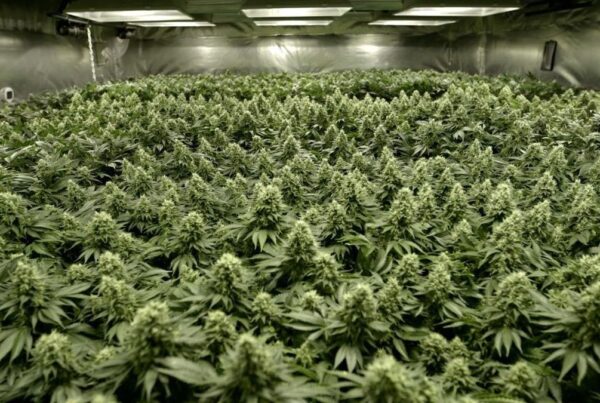If you’re growing your own cannabis, one of your top goals may be to produce dense buds. For those unfamiliar, cannabis buds can vary greatly in density—ranging from light and airy, almost like tumbleweeds, to dense and compact, resembling little rocks.
Most growers and consumers prefer dense buds, and for good reason. Dense buds not only look more appealing but also tend to have a higher concentration of cannabinoids and terpenes compared to airy ones.
In this article, we’ll explore the key differences between dense and airy buds and then dive into the best practices for growing dense, high-quality buds on your cannabis plants.
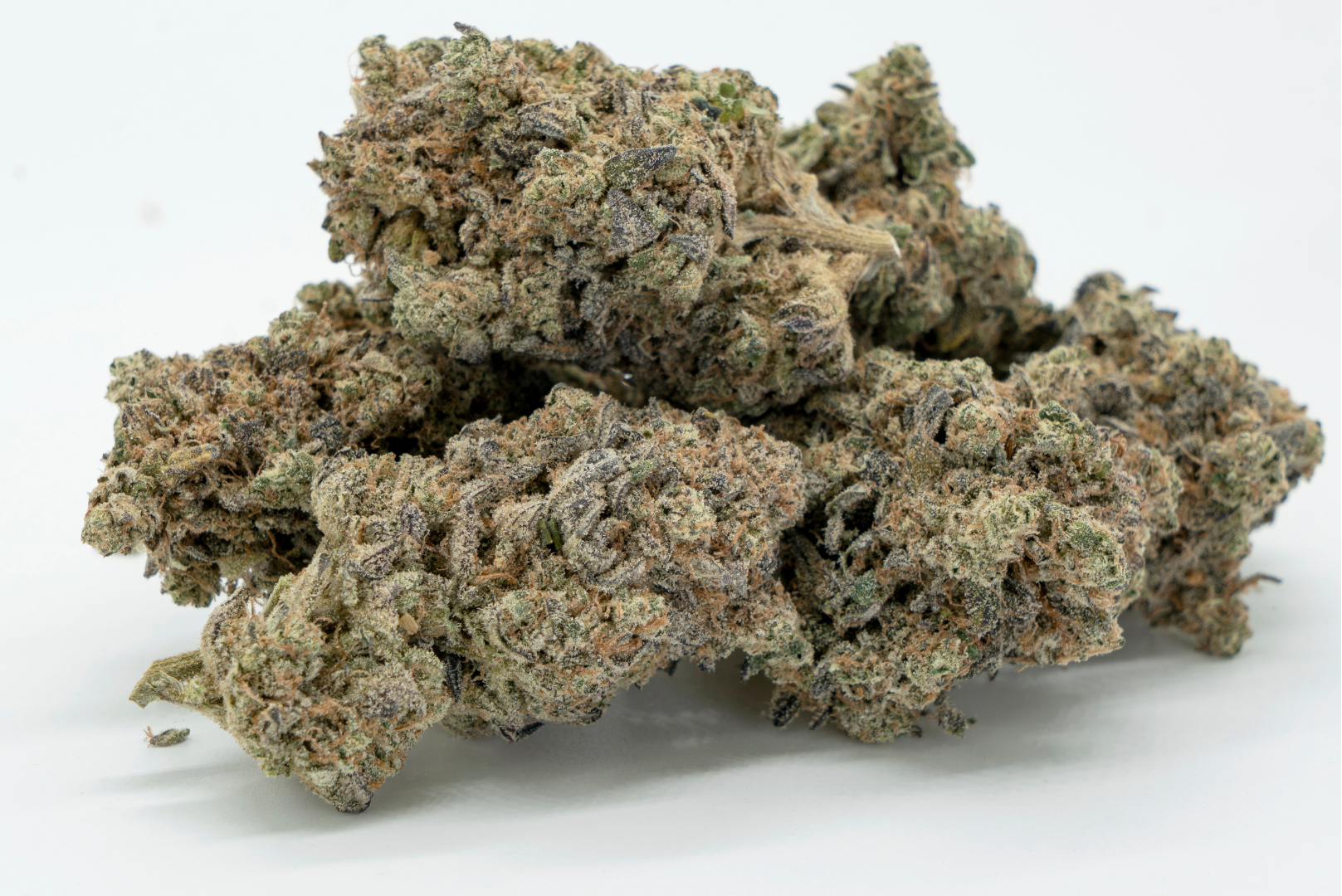
Dense Buds vs. Airy Buds – The Main Differences
When it comes to growing cannabis, understanding the difference between dense buds and airy buds is essential. While both types can be harvested and consumed, dense cannabis buds are generally much more desirable—and for good reason. Below are the key differences that set them apart in texture, appearance, weight, and potency.
Texture
Dense buds are firm, compact, and often feel like small pebbles when handled. They don’t compress easily when squeezed and tend to be sticky due to their high concentration of trichomes, the tiny resin glands that contain cannabinoids and terpenes. In contrast, airy buds are light and fluffy, compress easily when touched, and typically lack the same level of stickiness.
Appearance
You can usually spot the difference between dense and airy cannabis buds by sight alone. Dense buds look tight, thick, and compact, with minimal visible spacing. They’re often smaller in size but heavier and more solid. Airy buds, on the other hand, appear larger and looser, with plenty of visible space between the calyxes. They resemble miniature tumbleweeds, whereas dense buds resemble small, solid rocks.
Weight
Even though they may appear smaller, dense cannabis buds weigh significantly more than airy ones. Their compact structure gives them more substance per square inch, making them a better value in terms of yield and product weight.
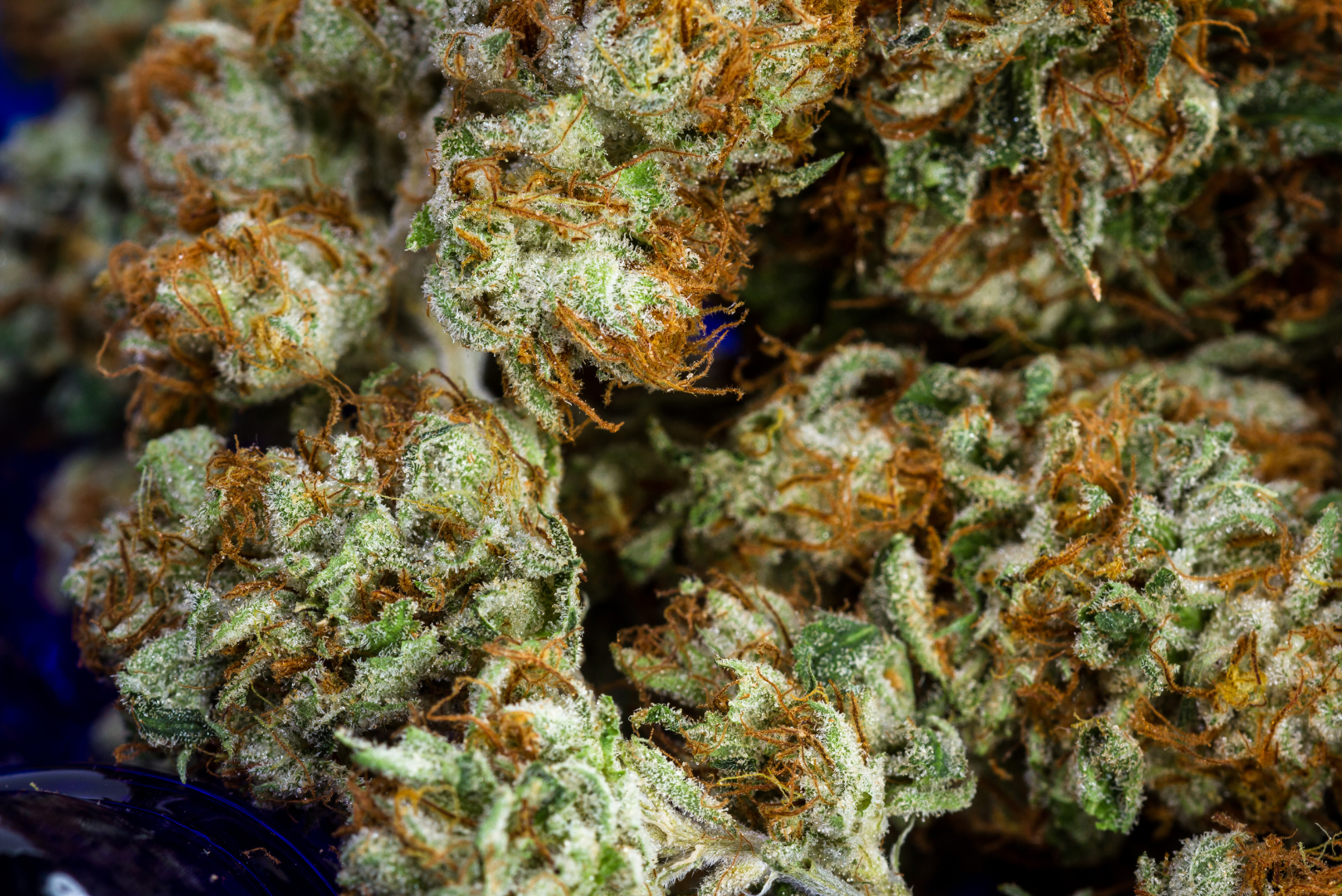
Potency
Arguably the most important distinction lies in cannabis bud potency. Dense buds typically have a higher trichome concentration, which means more THC, CBD, and other cannabinoids. Since these compounds are primarily stored in the trichomes, the increased density often translates to a more potent final product. In contrast, airy cannabis buds tend to have fewer trichomes and are generally less potent overall.
7 Best Ways to Increase Bud Density
If you’re aiming to grow high-quality cannabis, dense buds should be one of your top goals. Loose, airy buds not only lack visual appeal but also tend to have lower potency and weight. Fortunately, there are several reliable techniques to increase bud density and improve the overall quality of your harvest. Below, we explore the seven best ways to grow dense cannabis buds.
1. Grow Indica-Dominant Strains
While not a hard rule, cannabis genetics play a significant role in determining bud density. Indica strains are typically known for producing denser, thicker, and heavier buds compared to sativa strains, which often develop a looser, more airy structure. Choosing the right strain is key—and even among indicas, some cultivars will yield much denser buds than others. Starting with the right genetics lays the foundation for dense flower development.
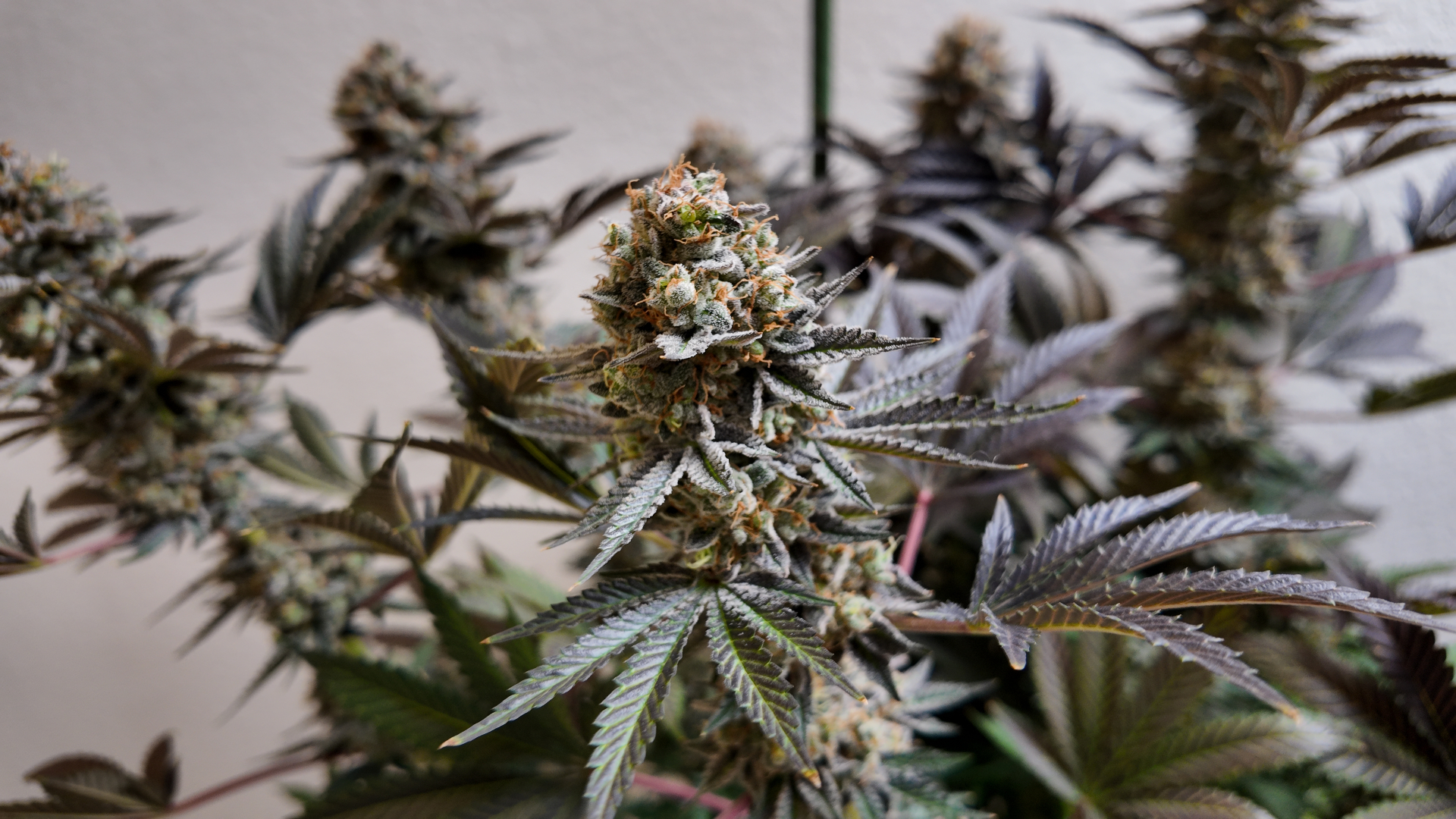
2. Provide Maximum Lighting & the Right Kind
Light is one of the most critical factors in cannabis growth, especially during the flowering stage. Your plants rely on light for photosynthesis, which drives bud development. Aim to deliver around 40 watts of light per square foot of canopy space.
High-efficiency LED grow lights are ideal, as they offer strong light output with lower heat generation, reduced energy consumption, and better spectrum control.
Equally important is the type of light. Full-spectrum lighting is ideal, with blue and red wavelengths playing key roles during flowering. Keep lights positioned 12–24 inches above the canopy for optimal penetration and growth.
3. Monitor the Soil Moisture Level
Proper watering habits are essential for plant health and dense bud production. A common trick is to stick your finger into the soil—if it’s dry up to the second knuckle, it’s likely time to water.
How much and how often you water depends on several environmental factors, including temperature, humidity, and pot size. Establishing a consistent watering routine is crucial. Learn to recognize signs of both overwatering and underwatering, as both can negatively affect bud development and reduce overall yields.
4. Maintain Optimal Humidity and Temperature
Environmental control is another key element in maximizing bud density. During the early flowering stage, aim for a humidity level of 40%–60%. In the late flowering phase, many growers reduce humidity to 35%–55% to prevent mold and promote tighter buds.
For temperature, maintain a range of 68°F–82°F (20°C–27°C) during early flowering, and 64°F–78°F (18°C–25°C) in the later stage. These ideal conditions help your cannabis plants focus energy on bud growth and resin production.
5. Use the Right Nutrients
Nutrition plays a central role in developing dense, potent cannabis buds. During flowering, your plants need more phosphorus and potassium to build strong flowers. The recommended NPK ratios are 1:3:2 in the early flowering stage and 0:3:3 in the late flowering stage.
Providing the correct nutrient balance at the right time helps support resin production, bud formation, and overall plant strength. Avoid overfeeding or nutrient deficiencies, both of which can hinder bud development.
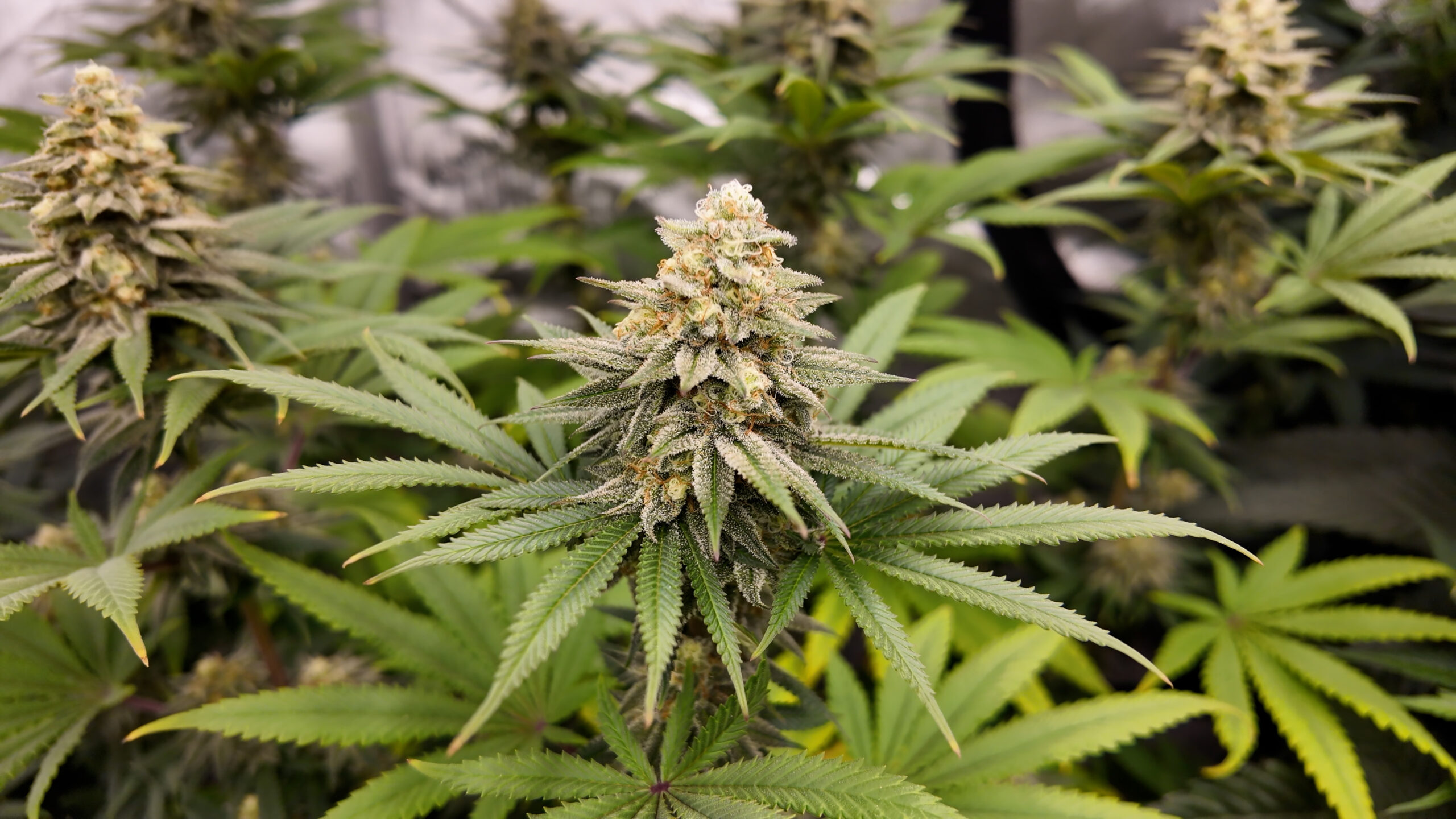
6. Supplement with CO₂
Adding carbon dioxide (CO₂) to your grow environment can significantly boost bud density and plant vigor. Cannabis uses CO₂ during photosynthesis to create sugars, which act as fuel for plant growth. Supplemental CO₂ allows plants to use more light efficiently, which in turn leads to faster growth and bigger, denser buds. CO₂ is especially effective in sealed grow rooms with strong lighting systems.
7. Use the Defoliation Technique
To maximize light exposure and direct energy toward bud development, consider defoliation—a pruning method that removes excess fan leaves, especially from the lower parts of the plant. This allows more light to reach the canopy and improves airflow.
By strategically removing leaves, your cannabis plant can redirect its energy to developing bigger, tighter buds rather than maintaining unnecessary foliage. Defoliation also helps reduce the risk of mold and mildew during the flowering phase.
Final Thoughts on Growing Dense Buds on Cannabis Plants
There you have it, folks—seven proven ways to grow dense buds on your cannabis plants. From selecting the right indica-dominant strains to optimizing your lighting, environment, and nutrients, every step plays a crucial role in achieving those compact, resin-rich flowers.
It all begins with solid genetics, but with proper care and attention, your plants can produce thick, sticky, and high-THC buds that stand out in both potency and appearance. By applying these best practices, you’ll be well on your way to harvesting dense cannabis buds you can be proud of.
Sources:
- https://www.zamnesia.com/blog-tips-improving-density-cannabis-buds-n2075
- https://www.royalqueenseeds.com/us/blog-how-to-grow-cannabis-with-dense-buds-n333
- https://www.growweedeasy.com/dense-buds
- https://shoppecallies.com/blog/what-is-the-difference-between-indica-and-sativa
- https://trimleaf.com/blogs/articles/grow-lights-how-many-watts-per-plant-square-foot-is-needed
- https://www.mars-hydro.com/info/post/the-ultimate-guide-to-spectrum-science-in-led-grow-lights
- https://iq.lighting/blogs/lighting-blog/positioning-led-grow-lighting-for-all-stages-of-marijuana-growth
- https://greenleafmc.ca/our-learning-centre/sativa-vs-indica
- https://www.royalqueenseeds.com/blog-indoor-cannabis-growing-relative-humidity-and-temperatures-n243
- https://www.zamnesia.com/grow-weed/308-npk-ratios
- https://fluence-led.com/co2-for-cannabis-cultivation/
![]()

